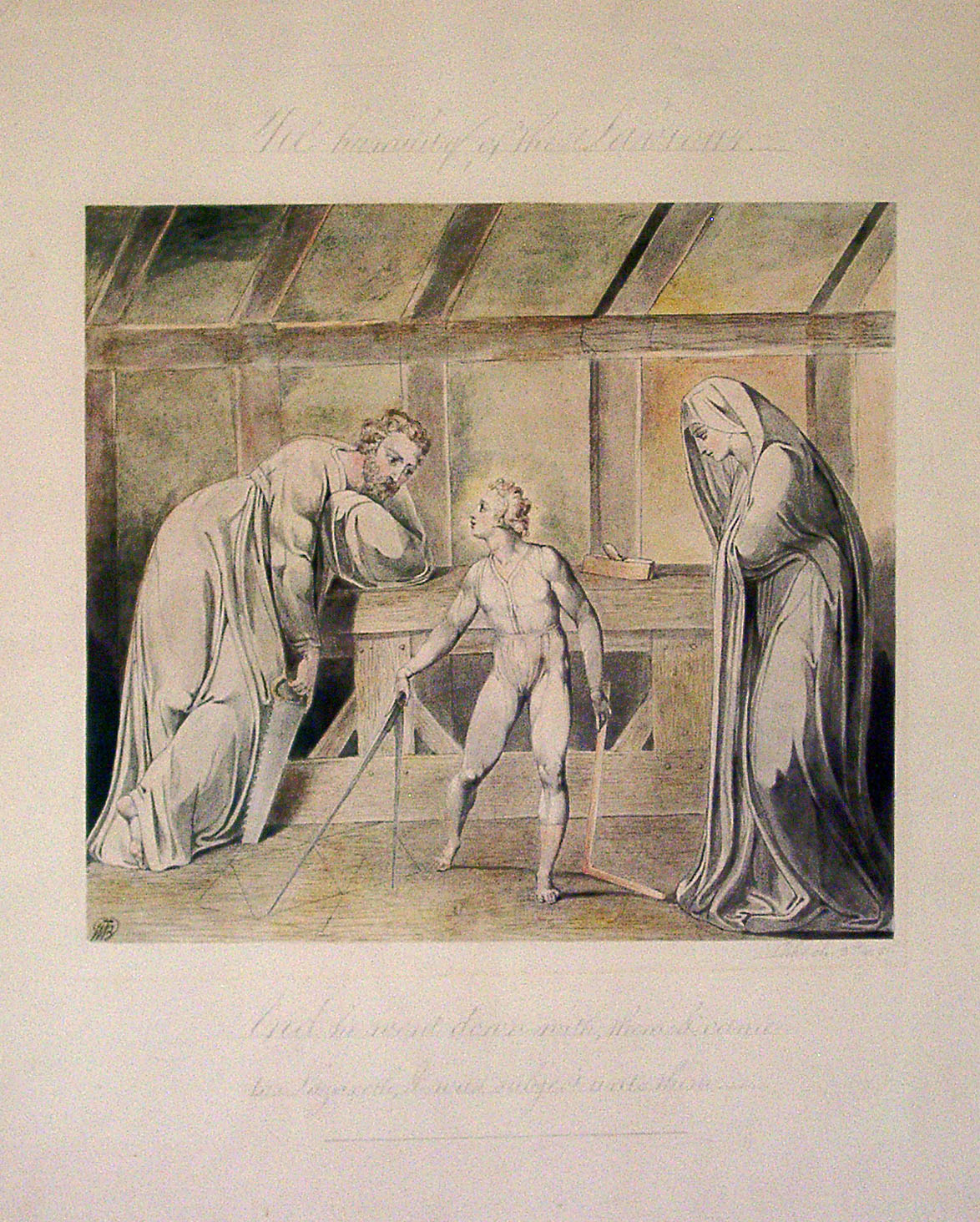 The New Art Gallery Walsall, West Midlands of England
The New Art Gallery Walsall, West Midlands of EnglandThe Garman Ryan Collection
Christ in the Carpenter's Shop
"This illustration is one of the Bible series commissioned by Blake's patron Thomas Butts. Eight others from the series are in the Tate Gallery. Christ is pictured as a youth, demonstrating his knowledge of carpentry with the geometric drawing on the floor. The artist's love for symbolism is evident here - Christ's compass indicating rational knowledge and reason, and Christ himself a symbol of imagination and creativity. In actual fact, in the original biblical text the scene refers to (Luke 2:51), nowhere is a carpenter's shop referred to. Blake has interpreted the meaning to relate to Christ's family trade." From the Walsall website.
Legend above picture - The Humility of the Savior
Below picture - "And he went down with them and came to Nazareth, and was subject unto them." [Luke 2:51]
As usual Blake is doing more in this picture than represent an actual scene from the life of Jesus. The figures we take to be Mary and Joseph seem to be shown symbolically. Christ looks away from Mary as if saying 'what have I to do with thee' (the question asked in To Tirzah), although she focuses her complete loving attention on him. The clothing Mary wears is the thick draped fabric seen in classical painting. So Mary as the material side is covered in dark thick garments (robes.)
The youth focuses his attention on Joseph as an image of the Father, perhaps even with the appearance of Los (the Eternal Prophet.) Joseph shows his left heel, a favorite position of Blake; according to Erdman the heel, synonymous with the word tarsus, suggests the conversion of Paul (of Tarsus).
The boy Jesus engrossed in conversation with the man, is a reminder of the encounter Jesus had had earlier in Luke's gospel with the teachers in the temple as he was engaged in discussions which lasted three days.
The youth holds the two symbols associated with Masonic organization. The compass toward Joseph, the square toward Mary. So the representation is of the male and female, the sky and earth, the spirit and matter, the eternal and the transient. The figure inscribed on the floor (squares and triangles), reminds me that Jesus traced figures in the dust when the woman was taken in adultery, which lead to her forgiveness.
On a more prosaic note, I see Jesus portrayed as a carpenter, an artisan with the tools he used in his work. I don't doubt that Blake had the same tools in his art and printing shop and used them daily. Newton (ever the mathematician) in Blake's portrayal, too, is shown holding the compass and inscribing a figure on paper as Blake himself did, and as was done in the carpenter's shop. The image from the frontispiece of Europe often called the Ancient of Days, shows either the creator God or Urizen, inscribing the world of matter with the compass. The picture I get is that Jesus, Newton, Blake, the Creator and Urizen shared the same instrument as well as some of the same activity. That activity was giving body to ideas.
No comments:
Post a Comment